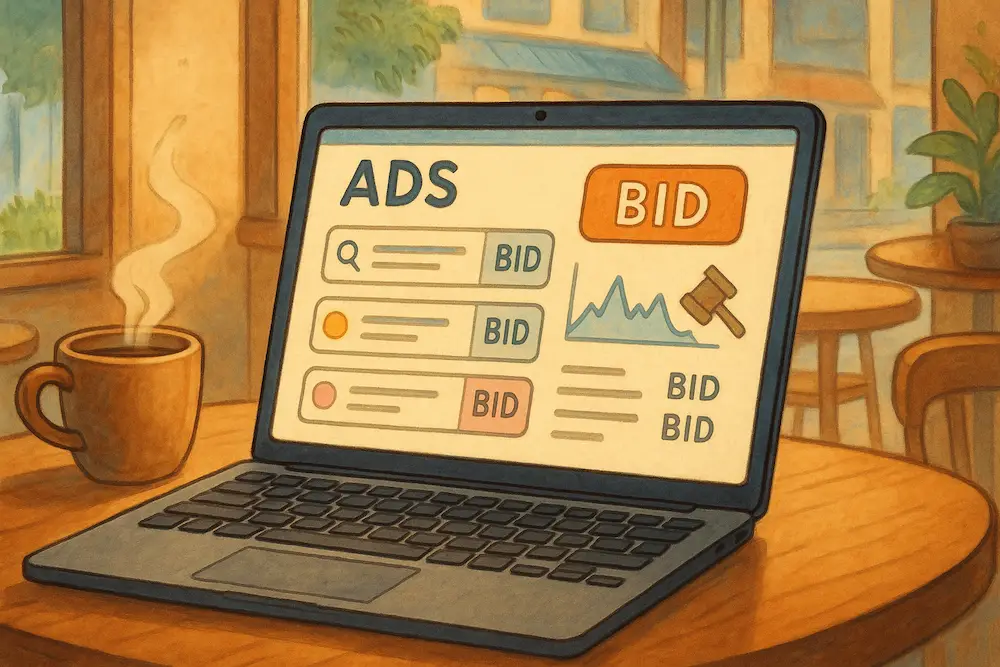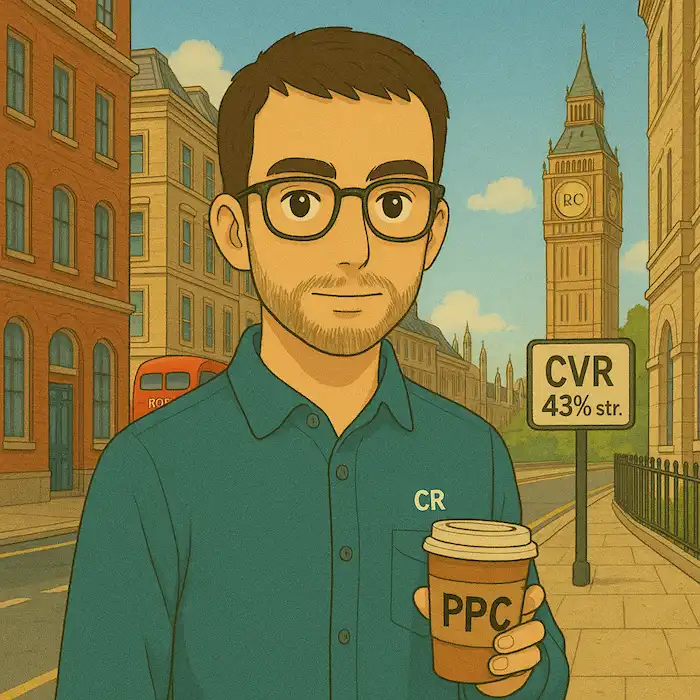The paid search landscape is shifting fast in 2025. I've watched marketers scramble to adapt their strategies as costs rise and AI transforms what's possible. Search ads still deliver results, but where companies put their money has changed dramatically since last year.
The growing paid search market
The global search advertising market will hit $351.5 billion in 2025, with US spending reaching $140.06 billion. That's a 7.5% jump from 2024 despite ongoing economic uncertainty.
Why keep spending more? Simple: paid search delivers measurable outcomes better than almost any other channel. About 80% of businesses now rely on PPC advertising to grow, and data shows it generates an average 4x return on investment.
The challenge? CPCs have jumped across 86% of industries since last year. This cost inflation is forcing brands to get smarter about where they spend and how they optimize campaigns.
Google vs. Bing: Shifting platform priorities
Google still dominates with 50.5% of US search ad spending, but its grip is loosening. Amazon now claims 22.3% of search dollars, while Bing continues gaining ground as a practical alternative.
Our research uncovered something surprising: 52% of marketers plan to increase Google ad spend in 2025, but 64% will boost their Bing investment. This shift toward platform diversity makes sense when you look at Bing's advantages:
- Less competitive auction environment
- Lower cost-per-click (average $1.54 across industries)
- Expanding reach through Microsoft's ecosystem
- Better value proposition for certain demographics
TikTok Search is reshaping platform strategies too, with 41% of PPC marketers planning to increase their TikTok budget this year. The smartest brands I've worked with are shifting 10-15% of search spend to test these emerging platforms while maintaining their core Google presence.
Why marketers are increasing their ad spend
When I asked marketers why they're spending more on paid search in 2025, their answers were refreshingly straightforward:
- Proven direct ROI: Despite rising costs, paid search delivers measurable returns. The direct connection between spending and revenue makes these budgets easier to defend to finance teams.
- It just works: The most common response? "It works." The consistency of paid search performance builds confidence for continued investment.
- Platform improvements: Both Google and Microsoft have enhanced their platforms with AI-driven targeting, better campaign tools, and expanded inventory options.
- Competitive necessity: With 72% of advertisers focused on "efficient growth" as their primary goal, staying visible in search results remains essential for market position.
"Gartner's research found about 75% of marketers expected budget increases heading into 2025, with 20% predicting increases over 20%. This trend hits paid search particularly hard as better attribution models reveal its full impact."
Budget constraints and reallocation strategies
Not everyone's spending more. About 38% plan to cut Google ad spending in 2025, while just 7% will reduce Bing investment. Their reasons?
- Profitability challenges from rising costs: As CPCs climb, some businesses simply can't maintain profitable campaigns, especially in competitive sectors.
- Shift to more affordable platforms: Many marketers are moving budgets to channels with lower costs and less competition, including alternative search engines and social platforms.
- Economic pressures: Broader financial constraints are forcing marketing teams to focus on their most effective channels.
- Budget approval hurdles: Even marketers seeing great results report trouble securing larger budgets due to organizational financial limitations.
I've seen successful teams adopt several cost control strategies: more precise audience targeting, better offline conversion measurement, and smarter bidding to maximize results within fixed budgets. Many now follow the 70-20-10 rule: 70% to proven strategies, 20% to emerging opportunities, and 10% to experimental channels.
AI transformation of paid search spending
Google's massive AI push in 2025 is fundamentally changing how marketers allocate their budgets. According to Google's VP of global search ads, Brendon Kraham, this shift is bigger than the mobile revolution, forcing advertisers to adapt quickly.
Marketing teams are focusing AI investments in three key areas:
- Campaign optimization: 75% of PPC professionals now use AI at least sometimes to write their ads, with 71% reporting satisfaction with the results. AI-powered bidding, keyword expansion, and audience targeting help stretch budgets further.
- Creative development: Advanced AI tools are automating ad creation, enabling more personalized messaging and improved testing. This lets marketers produce more variations with less effort.
- Measurement and attribution: AI provides deeper insights into how search ads influence the entire customer journey, helping allocate spending more effectively across channels.
The shift toward AI requires new budget items. Our research shows 91% of companies now have dedicated budgets for AI tools, up 5% from last year. These investments are paying off, with 68% of marketing executives reporting positive returns from their AI initiatives.
The rise of video and visual search advertising
The biggest shift in paid search spending for 2025? Visual and video search. As consumers move beyond text searches, marketers are following with new ad formats.
Visual search ads will grow significantly this year, driven by AI advances. About 15% of search budgets now go to emerging formats:
- YouTube advertising: Video ads on YouTube continue growing, with the platform becoming the top-performing social media channel for 22% of marketers.
- Visual search campaigns: Google Lens and similar tools are creating new advertising opportunities that forward-thinking marketers are already testing.
- Voice search optimization: As voice queries increase, marketers are adjusting keyword strategies to match more conversational patterns.
The expansion from text to multimodal experiences offers huge opportunities and challenges for advertisers in 2025. Early adopters are already gaining advantages before competition intensifies.
Conclusion
Paid search in 2025 reflects a market in transition. Text ads on Google remain the foundation, but marketers increasingly diversify across platforms, embrace AI optimization, and explore new formats like visual and video search.
Success now requires balancing efficiency with experimentation. The focus has shifted from spending more to spending smarter, with AI tools creating unprecedented opportunities to maximize ROI.
For marketers navigating these changes, the message is clear: paid search still delivers, but winning requires more sophistication, platform diversity, and willingness to embrace new technologies than ever before.


